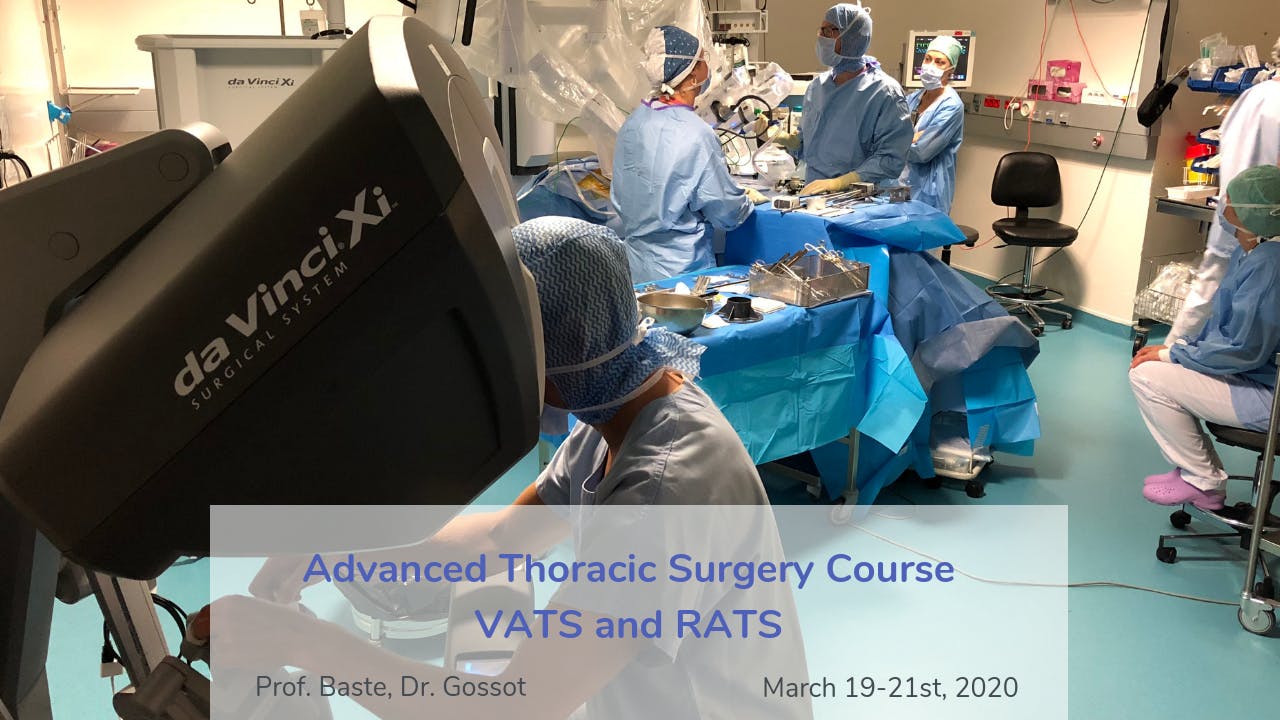INVIVOX: Why have minimally invasive RATS (Robot assisted thoracic surgical) and VATS (Video assisted thoracic surgical) techniques improved patient care?
Pr. Jean-Marc Baste: They allow a simplification of care and a better and faster post-operative recovery in patients, which is particularly interesting in multimodal treatment. Video surgery is part of an improved path with pre-habilitation, minimally invasive surgery and early rehabilitation. It's not just a camera and video. It's the culture of simplification, of quality of life: a whole concept that probably helps improve the performance of post-operative patients with the possibility of having their chemotherapy treatment thereafter.
INVIVOX: Is VATS or RATS lobectomy quickly becoming common in surgeons' practice?
Pr. Jean-Marc Baste: Currently in France, 50 to 70% of the early stages are carried out using a minimally invasive route (either robotic or video-assisted). In 6 years, we have gone from less than 10% to more than 50%. The adoption curve for minimally invasive techniques is therefore not about to reverse. Early detection of the disease makes minimally invasive surgery quite suitable for care management, hence the boom.
INVIVOX: What is the point of studying these two techniques during the same training?
Pr. Jean-Marc Baste: The concept is the same, that is, closed chest surgery, only the tools differ. The differences in the approaches between these two techniques are minimal in principle but the robotic platform is much more advanced and more scalable. The questions that remain unanswered are what the most effective tool in the care of different patients is and what the rate of adoption by surgeons will be. Robotic surgery offers many technological advantages in return for cost and logistics, which represent a challenge for healthcare establishments in a context of drastic budget control; and this is an obstacle to the dissemination of this tool.
INVIVOX: What is your opinion on the learning curve?
Minimally invasive surgery, video and robotics require specific training that takes much longer than advertised by the manufacturers or that even you imagine! The actual learning curves are long and difficult and require a significant, and above all continuous, training effort on the part of the surgeons but also of the teams.
Pr. Jean-Marc Baste: Minimally invasive surgery, video and robotics require specific training that takes much longer than advertised by the manufacturers or that even you imagine! The actual learning curves are long and difficult and require a significant, and above all continuous, training effort on the part of the surgeons but also of the teams.
INVIVOX: What are the benefits of robotic surgery?
Pr. Jean-Marc Baste: As an expert in both techniques, I can say that when we master robotics, it is much more powerful and controlled than with video surgery. The delta for patients is more difficult to demonstrate, but in terms of control of gesture and precision, it is unequivocal. The robot provides “patient” benefits that have not yet been validated but which are perceived by the surgeon as obvious: quality of dissection and of suturing, direct transfer of the open technique once the machine is mastered, complex acts made possible, less fatigue … But above all, you must master the tool as a team. This requires routine use and regular, sustained training.
"This disruptive technology brings real benefits, for patient and surgeon alike, even if it remains difficult to demonstrate for the moment."
INVIVOX: How do minimally invasive techniques in thoracic surgery involve safety risks?
Pr. Jean-Marc Baste: Security is no more important, but it takes on a different dimension. Interventions are more prepared. You must anticipate even more, establish scenarios and be ready to change them during the intervention. When we reach this level of excellence, the steps necessary for further improvement get bigger.
INVIVOX: What advice do you give to participants?
Pr. Jean-Marc Baste: This course brings academic notions and a vision of the most efficient standard techniques currently used. Robotics is a tool that is very advanced both in terms of images, fluorescence, etc. We also tackle the non-technical approach of minimally invasive surgery: new models of communication, security, crisis checklists adapted to the robotic surgery ... It is a specialty in its own right, the fact of operating remotely is a real change, more important than we think. The more we master the technique, the more we are aware of it.
After this course, I advise the surgeons to regularly travel and see their colleagues operate. I myself do it often. Robotic surgery is a world apart due to the concept, the remoteness.
INVIVOX: What benefits will participants derive from these three days at Ircad?
Pr. Jean-Marc Baste: They will have a global vision of what is best in Europe, by benefiting from exchanges and feedback from experts, around robotic platforms and techniques. It’s a high level of expertise.
INVIVOX: What will the participants be able to do when they get home?
Pr. Jean-Marc Baste: They will want to go to the operating room to see the surgeon operate in order to improve. There are several learning stages (simulator, theoretical teaching via e-learning, "drylab" ...) before the final stage of "medical proctoring" where they will be accompanied by an expert colleague within their operating room. Robotic surgery is an incredibly efficient and scalable tool, but time-consuming in terms of training and energy. Far from being intuitive, it is highly complex but if you are determined to invest yourself, you will not be disappointed...

